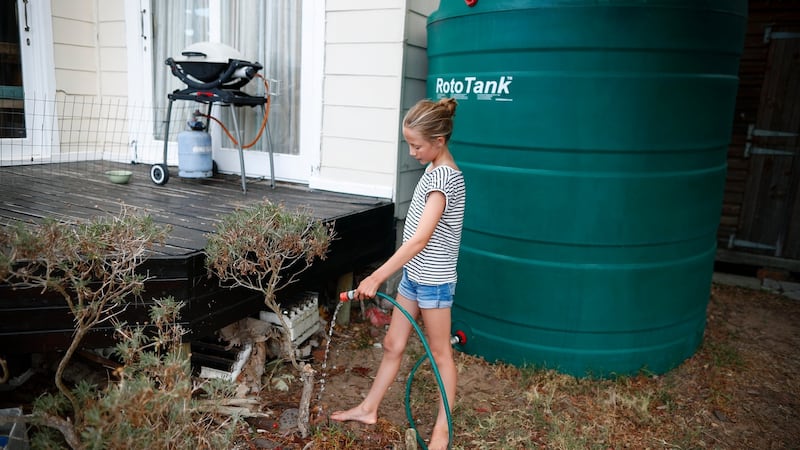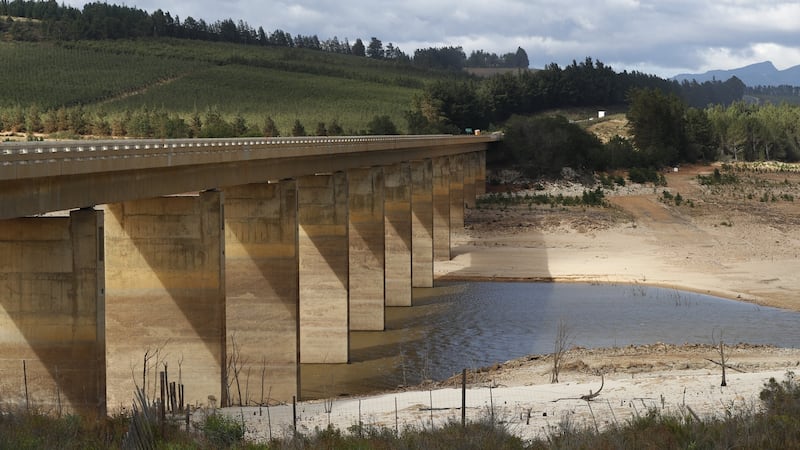South Africa's most popular urban tourist destination, Cape Town in the Western Cape Province, is on the cusp of becoming the first major coastal city in the modern era to run out of municipally supplied water.
As it stands, city officials will turn off the taps in the provincial capital of more than four million people on April 12th, which is when they believe the six dams that supply the city with water will be dangerously low.
When that day arrives, it is expected that about two million residents will have to queue at 200 designated points around the city, under military supervision to maintain order, for a daily ration of 25 litres of water.


The taps will be dry for between three and six months, say officials, to allow the winter rains to start replenishing the dams to more sustainable levels.
The water crisis has been primarily caused by an unprecedented drought and a failure by national and local governments to maintain water infrastructure and manage its supply in a sustainable manner.
A recent analysis of the most up-to-date rainfall data for the region by Dr Piotr Wolski, a researcher with the University of Cape Town's Climate System Analysis Group, revealed that the ongoing drought is the worst on record, with rainfall in 2017 especially poor.
"This kind of drought is expected once in 300 years," he wrote in an article published by the Daily Maverick news website this week.
Scientists say the changing climate means that rainfall to the city is coming later, dropping more erratically, and often misses its catchment areas altogether.
There are also issues around wasteful consumption and the fact that drinking-quality water supplied by the municipality is used for purposes other than human consumption. More than a third of the overall water usage is attributable to commercial agriculture and industry, which is now being hit hard.
Aside from the threat it poses to residents, the water crisis is a huge risk to the city’s vibrant tourism industry, which attracts up to two million visitors every year and provides jobs for hundreds of thousands more.
Crisis politicised
To make matters worse, the crisis has been politicised by political parties ahead of next year’s general election. The main opposition Democratic Alliance (DA) blames it on national government’s failure to maintain and expand water storage and supply infrastructure in line with the city’s growing population.
On the other hand, the ruling African National Congress party accuses the DA-run city of not recognising the crisis soon enough and delaying mitigating interventions.
As the politicians squabble, the disaster draws ever closer.
As of January 22nd, data from the city showed its feeder dams were on average 27.2 per cent full, down from 28.7 per cent the previous week, and from nearly 41.1 per cent the same time a year ago.
City authorities say that queueing for water will begin once the dam levels drop to 13.5 per cent full because of the difficulty in extracting the last 10 per cent of their full capacity.
But “Day Zero” – as it has become known locally – is ever-shifting because residents’ water usage rises and falls from week to week, with many people refusing to reduce their consumption to the levels needed to avert the disaster.
Some recent projections suggest that the city’s water could run out as early as mid-March at the current rate of consumption.
Since early last year, people have been asked to shower for under two minutes and use grey water to flush their toilets with in order to save water. It has also been made illegal to water your garden, wash your car, or top up pools with municipal water.
Beyond residents’ reach
Initially residents managed to reduce their overall collective usage from over 800 million litres per day in early 2017 to about 600 million towards the end of the year. But the new combined consumption target of 500 million litres per day has proved worryingly beyond residents’ reach so far.
Despite this, a drastic reduction in water consumption is needed until the rains have arrived and alternative water sources under development by the city have come online, if the disaster is to be averted.
The premier of the Western Cape, Helen Zille, said recently that if everything went according to schedule, "augmentation schemes will, by the end of April, produce between 120 million to 150 million litres per day – either from ground water extraction or from small-scale desalination".
But given the city’s current water consumption levels, these outputs will not alleviate the problem in the short term. Therefore, from February 1st, residents must consume less than 50 litres of water per person a day to push Day Zero further out.
However, many people doubt this can be achieved. Only last week (mid-January), Cape Town mayor Patricia de Lille confirmed that up to 60 per cent of the population was still utilising more than January’s daily limit of 87 litres per person.
“It is quite unbelievable that a majority of people do not seem to care and are sending all of us headlong towards ‘Day Zero’,” she said.










